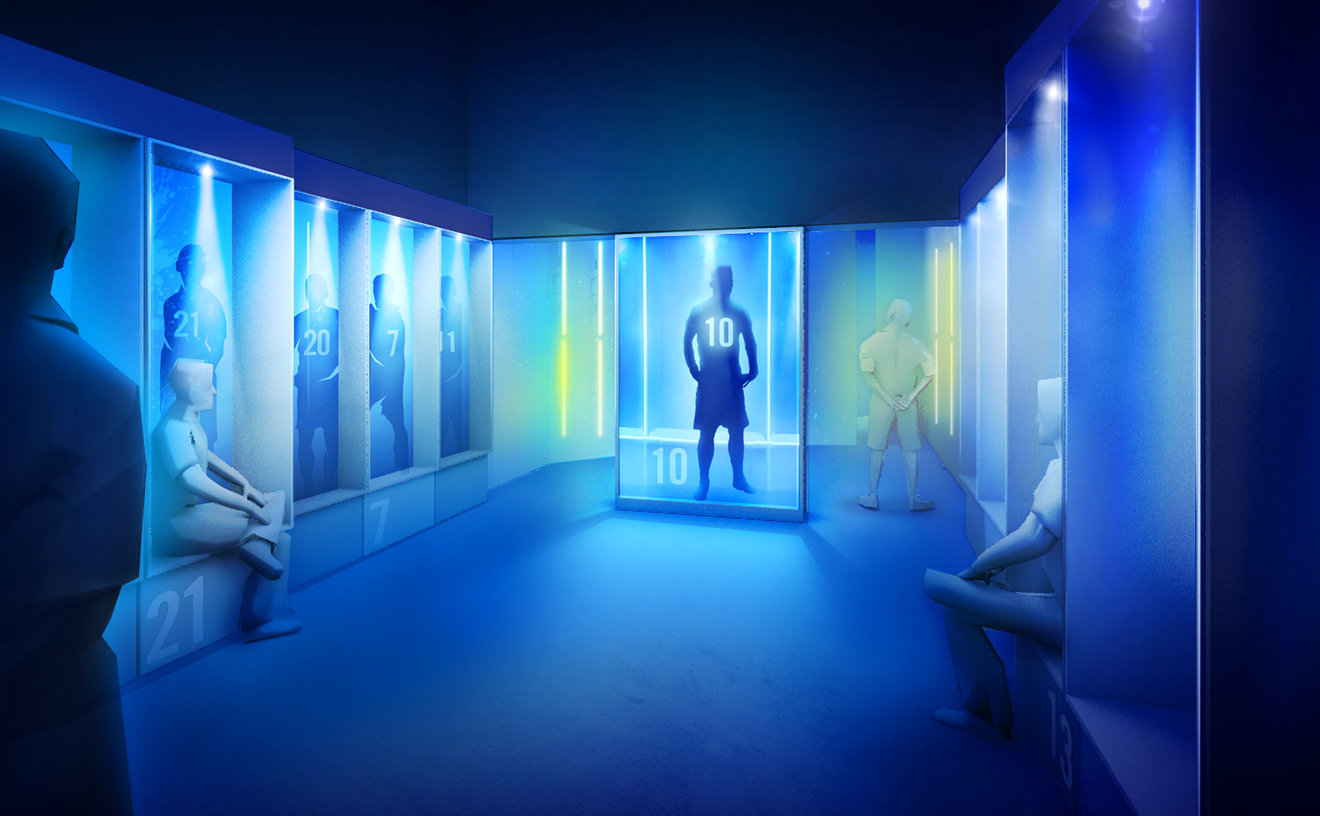For many fashion is an art form not unlike sculpture or architecture, and in many ways one that more perceptively illustrates history. How would we visually identify the 1970s without bell bottoms? The 1920s without bobs and drop waists? The 1990s without grungy jeans and flannel shirts? Studying and documenting the art of dress is certainly an anthropological survey; but what happens when we take those distinct pieces out of their context and put them in a space that changes the way we look at them?
Judith Clark has been studying fashion for over 20 years, and she has brought her expertise, along with an exquisite collection of garments, to Bal Harbour Shops for the Fashion Project, a series of exhibitions that will explore fashion and the culture surrounding its design, innovation, production and consumption in an experimental space.
"When we go to a fashion exhibition, we're not invited to think about how it's being displayed, we're asked to look at the clothes. And so what I've been looking at is not only dress itself but how it's being exhibited, so making the exhibition be the subject, rather than dress history being the subject," says Clark, an independent fashion curator who's worked with museums like thee Palais du Tokyo in Paris, Palazzo di Pitti in Florence, and the Victoria and Albert Museum in London.
Clark intended for this first exhibition, which opens on today, April 10 on the third floor of the famous mall, to be a sort of micro-history of fashion and its stagings in museums. She used Victorian wooden cabinets to display the pieces, associating this aesthetic with what patrons normally see in the museum setting. The chronological progression of objects isn't meant to illustrate a time period through fashion, but rather to delve into how the display of fashion has evolved throughout history.
The chronology begins with Clark's 'curiosity cabinet,' as a way to illustrate what may have been the origins of fashion exhibition. Enclosed in the cabinet are eight different objects that could, in their own right, come from very distinct periods in time. In fact, nearly all of the pieces are contemporary. "Even though the pieces are contemporary, they look like a collection of objects that someone might discover, and from that create some kind of social history," Clark says.
These pieces are intentionally deceptive — they illustrate how designers construct re-imagined pieces from fragments of different cultures, but the way in which they're displayed tricks the observer into thinking they're viewing a piece of fashion history.
As the exhibition progresses, Clark creates a link between art and fashion, and their interrelation both inside and outside the museum. The art world not only influenced designers, but the exhibition of garments as well: From the way its created and down to how its displayed, Clark seeks to visualize how fashion has progressed from a means to cover the body into an extraordinary form of self-expression.
For the exhibition, Clark used a sensationally diverse set of pieces, from Victorian-era accessories to an impeccable costume from the Ballets Russes, and garments from famed designers like Elsa Schiaparelli, Miuccia Prada and Alexander McQueen. Though Clark doesn't employ any sort of collecting method, certain objects entice her more: "I've been interested for many years with the relationship between dress and surrealism but also about dress and the avant garde, and how important it was at the turn of the century."
The early influence of Surrealism in fashion is particularly fascinating in the context of fashion's evolution and present-day role in the 21st century. Consider the garments that haute couture designers send down runways during fashion weeks: In the midst of ready-to-wear garments, there's always one or two pieces that the everyday consumer wouldn't dream of actually wearing. In fact, those designers are creating a dream; they're bringing a fantastical idea to life, a sort of wearable art, and sending it down the catwalk as a means of exhibition. That it's impractical or unrealistic doesn't matter; it's that intersection of fantasy and reality that makes fashion such an accessible artistic concept, no matter how inaccessible the garments may be.
To that end, it's worth noting that though the fashion peddled at Bal Harbour Shops is certainly inaccessible to the South Florida population at large, the Fashion Project and its accompanying exhibitions and events are free and open to the public — perhaps as a way to draw future luxury goods consumers, or simply as a means to celebrate fashion and its irrefutable role as art in society.
Ms. Clark's second exhibition, titled "Morphing," will feature the same objects displayed in the first exhibition, but in an entirely new context. "The second incarnation is an opportunity to tell a lot of different stories about each object – it's not about one historical story, but rather about interpretation," Clark said.
The Fashion Project was developed and conceived by Cathy Leff, former director of the internationally acclaimed Wolfsonian-Florida International University Museum in Miami Beach. The programs and exhibitions aim to blur boundaries between fashion, design, art, consumer culture, and costume culture. Upcoming programs include artist, designer, and author roundtables; a fashion film series; and a discussion on the role of hair in art and design.
For more information on the Fashion Project, visit fashionprojectbhs.com.
Follow Nicole on Twitter.
[
{
"name": "Air - MediumRectangle - Inline Content - Mobile Display Size",
"component": "19274298",
"insertPoint": "2",
"requiredCountToDisplay": "2"
},{
"name": "Editor Picks",
"component": "17482312",
"insertPoint": "4",
"requiredCountToDisplay": "1"
},{
"name": "Inline Links",
"component": "18711090",
"insertPoint": "8th",
"startingPoint": 8,
"requiredCountToDisplay": "7",
"maxInsertions": 25
},{
"name": "Air - MediumRectangle - Combo - Inline Content",
"component": "17482310",
"insertPoint": "8th",
"startingPoint": 8,
"requiredCountToDisplay": "7",
"maxInsertions": 25
},{
"name": "Inline Links",
"component": "18711090",
"insertPoint": "8th",
"startingPoint": 12,
"requiredCountToDisplay": "11",
"maxInsertions": 25
},{
"name": "Air - Leaderboard Tower - Combo - Inline Content",
"component": "17482313",
"insertPoint": "8th",
"startingPoint": 12,
"requiredCountToDisplay": "11",
"maxInsertions": 25
}
]










